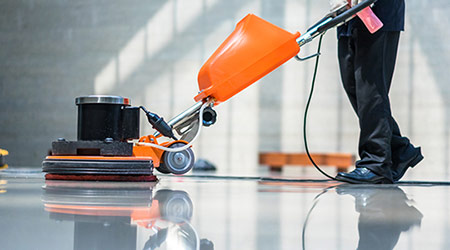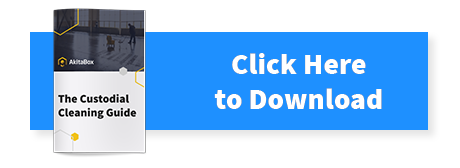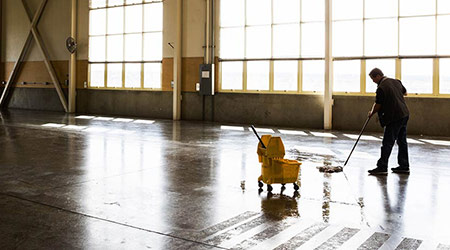SPONSORED
AkitaBox - Branded Feature
How to Create a Custodial Cleaning Plan That Actually Works
When considering a custodial workload balance, it's easy to feel frustrated by a lack of information during the planning process and not knowing where to start. The main culprit in workload balancing issues comes down to uneven work assignments: staffing work solely based on square footage instead of calculating in a number of other important factors in your facilities.
Because of this, when teams are actually in the field cleaning, two zones of similar size could require vastly different amounts of time to clean properly. This often leads your team to feel overwhelmed, underutilized or spread too thin. The good news is that there is a simple formula (and a handy guide) to calculating a custodial cleaning plan yourself.
In the Custodial Cleaning Guide, we take into account five different guidelines when devising a formula for proper custodial workload balancing.
5 Things to Consider For A Custodial Cleaning Plan
1. Know Your Square Footage
Understanding your facilities' square footage is the first step in beginning a custodial staffing plan. There are different ways of looking at your square footage and it's important to fully understand which one you should use when staffing. While your Gross Square Feet (GSF) is important, what you'll really need to take into consideration is your facilities' Net Cleanable Square Feet (NCSF). If you need a refresher on the different square footage definitions, you can view our post on those here.
2. Know Your Floor Types
Taking into account different floor types and the time it takes to clean them (for example, carpet versus tile) is critical when making cleaning zones. By effectively grouping your zones by floor type, you'll make sure there is less time switching equipment and supplies and more time spent getting the job done.
3. Know Your Room Types
When is the last time you consulted your floor plans to inform your cleaning zones? Your standards of cleanliness should change depending on room use. For example, a vacant office space won't need the same attention as a high-traffic workroom. Knowing which zones have a higher concentration of rooms that require special attention is essential to balancing a team's workload.
4. Know Your Fixtures
Fixtures in your facilities are often one of the trickiest aspects of calculating workload balancing. These can include items used daily (such as toilets, sinks, door handles, cabinet pulls, windows, furniture or lamps), or they can be things that can easily collect dust and need to be revived (including eye wash stations, drapes, woodwork or air vents). The less time you spend swapping out equipment to clean each one, the better prioritized your zone will be.

5. Know Your Equipment
When it comes to cleaning supplies and equipment, it's important to understand your current roster of tools and when (or when not) to upgrade. If you've been using the same equipment for years, it may actually be costing your team extra time and frustration. Although equipment such as mops, brooms, vacuums, or floor waxers can last for years, newer makes or models customized for certain floor types in your facilities may actually deliver a higher standard of cleanliness or get the job done faster.
Forming A Custodial Staffing Plan
After you've considered the different data points in your facilities that should inform your plan, you're ready to start using this information to create a formula that will give you critical information for staffing, such as:
- How many square feet each team member can adequately clean
- What level of cleanliness each team member can strive for
- The most efficient way to schedule cleaning routes
- Whether you need to upgrade your cleaning equipment
- Whether you should consider hiring more staff or contract outsourced janitorial services
Ready to get started? Download the free Custodial Cleaning Guide to calculate your staff's allocation and set your facilities up for long-term success.

Worried about the accuracy of your facility's space data? Discover AkitaBox's best-in-class data collection services that can easily help you manage your facility's custodial, maintenance and construction needs. Get a complimentary consultation today.










